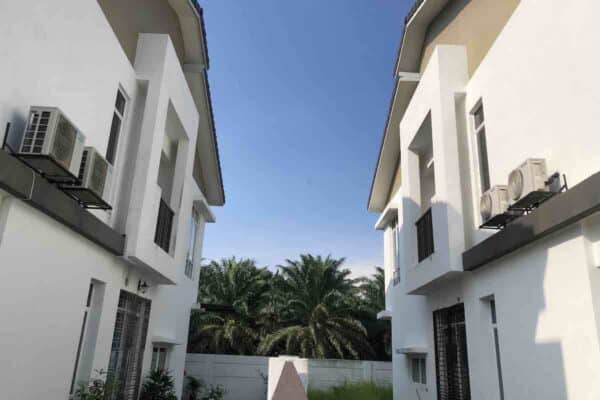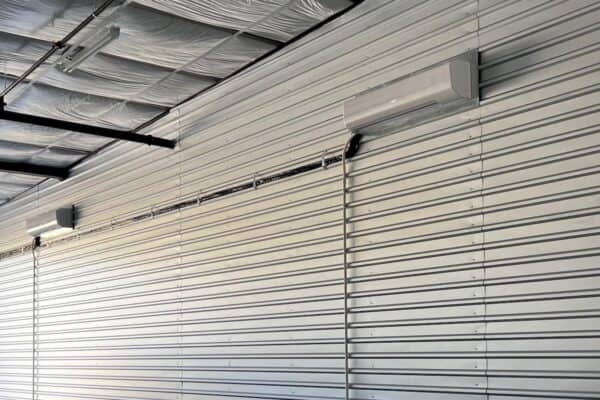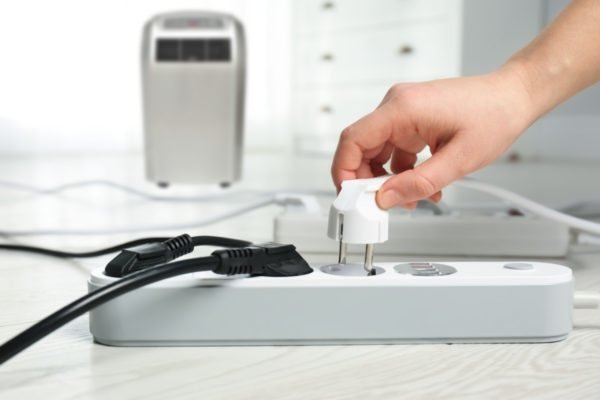Why Condo Air Conditioners Not Cooling? (How to Solve)
Condo air conditioners not cooling is a problem that frustrates many people. Condo air conditioners work quite differently from conventional single-family landed house air conditioners. So, why condo air conditioners are not cooling and how can you solve it?
The most common cause of condo air conditioners not cooling is a faulty motorized on/off valve. A faulty motorized on/off valve may not open properly to allow chilled water flows through a condo air conditioner thereby causing the condo air conditioner not cooling.
While I was doing research on condo air conditioners, I came across forums and threads about people asking for help on the air conditioner in their condo. Particularly, the problem with not cooling but the fan is working.
Although I don’t have real-life experience in dealing with condo air conditioners in the United States and Canada, I noticed that condo air conditioner actually work the same way as hotel air conditioners in Malaysia and Singapore.
How Condo Air Conditioners Work?
To understand why condo air conditioners not cooling, we must first understand the basic working principle of a condo air conditioner. Let’s go through the two most common types of condo air conditioners.
Condo Fan Coil Unit
A condo fan coil unit works just like a commercial chilled water fan coil unit. However, condo fan coil units are usually vertical rather than horizontal. Still, some condo fan coil units are horizontal.
Condos with fan coil units have centralized chillers and boilers located on a dedicated floor. These chillers and boilers will supply chilled water and hot water through the piping system to the fan coil unit in your condo unit.
During the summer, the management of your condo will operate the chillers to provide chilled water for cooling. During the winter, they will switch to operate the boilers to provide hot water for heating.
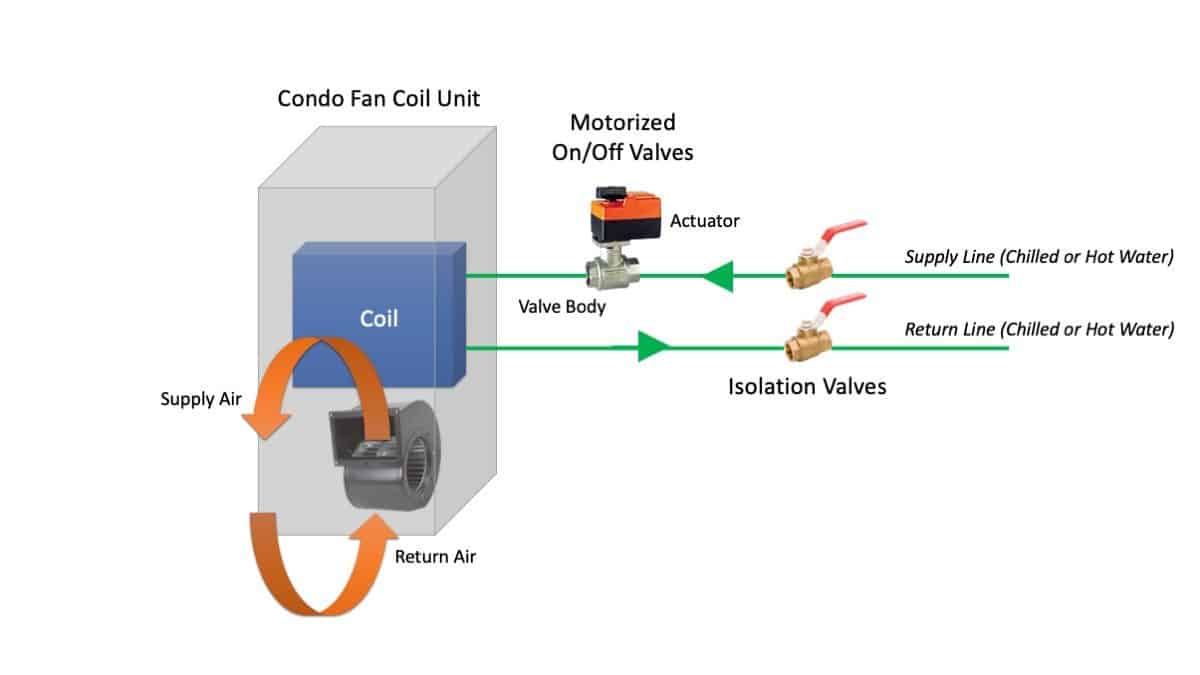
No matter it is chilled water or hot water, the water will pass through the coil inside the condo fan coil unit during operation. At the same time, the fan coil unit runs its fan blower to circulate the air inside the condo and hence, achieve cooling or heating.
Some condo fan coil units do not take hot water because of the lack of centralized boilers. Instead, they use electric heaters for heating. Nonetheless, the basic working principle is the same.
Condo Heat Pump
A condo heat pump is also known as a water source heat pump. Conversely, conventional heat pumps found in single-family landed houses are known as air source heat pumps.
Condos with water source heat pumps have centralized boilers but not chillers. Instead, they have cooling towers on the roof to provide condenser water to the heat pump. Meanwhile, the boilers provide hot water to the heat pump.
During the summer, the management of your condo will operate the cooling towers to provide condenser water to the heat pump in your condo unit for heat rejection thereby cooling your condo unit.
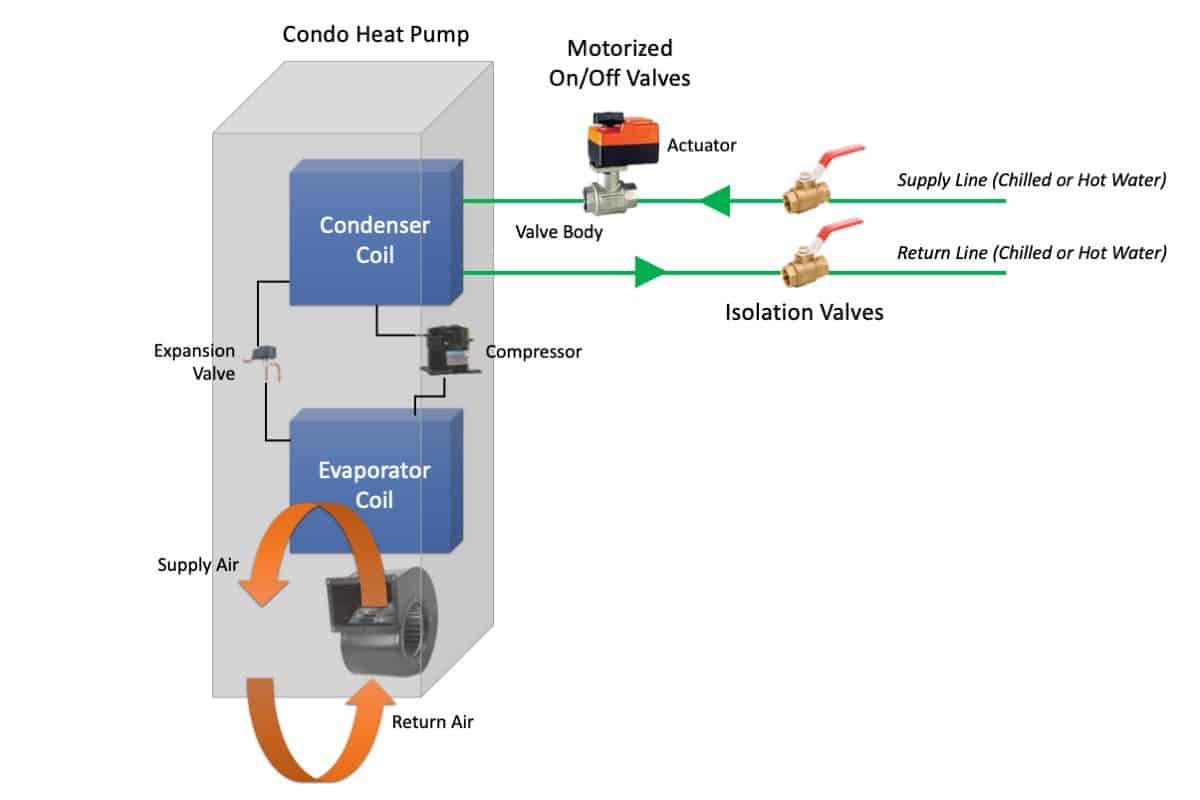
Water source heat pumps use refrigeration cycle for cooling and heating. For cooling, water source heat pumps absorb heat from your condo unit and reject it to the condenser water.
During the winter, similarly, the management of your condo will switch to operate the boilers to provide hot water to the heat pump in your condo. However, the hot water doesn’t need to be as high temperature because the heat pump can use refrigeration cycle to boost the heating.
Why Condo Air Conditioners Not Cooling?
There are a few reasons why condo air conditioners are not cooling. Excluding the common causes such as dirty filters and dirty coils, here are some of the reasons why your condo air conditioner is working but not cooling.
Faulty Motorized On/Off Valve
The most common yet least discussed cause of condo air conditioners not cooling is a faulty motorized on/off valve. A motorized on/off valve is used to control the amount of water entering an air conditioning unit.
As mentioned earlier, whether you are using a condo fan coil unit or a condo heat pump, water will always flow inside your air conditioning unit. So, if the valve is not functioning properly, you’ll have problems with cooling or heating.
There are several types of valves in HVAC. Most valves used for condo air conditioners (fan coil units or heat pumps) are on/off type. As the name suggests, on/off valves can only turn on or turn off; 100% or 0%; let water flow in or stop water from flowing in.
If chilled water or hot water is flowing inside your condo fan coil unit or condo heat pump unit, you’ll have cooling and heating. Otherwise, you will not have cooling or heating.
A faulty motorized on/off valve has nothing to do with the operation of your condo air conditioning unit. The fan coil unit or heat pump will continue to blow air but not cooling or heating.
A motorized on/off valve is made of two components; a) the valve body itself and b) the actuator that drives the valve to open or close. Most of the time, the actuator fails several times before the valve fails. The valve body hardly broke.
In commercial buildings, many on/off actuators are replaced periodically due to faulty and poor quality actuators are replaced more frequently, obviously. Some of the good quality actuator brands are as follow:
- Belimo
- Siemens
- Danfoss
- Schneider
Good actuators are more expensive. However, they last much longer than cheap actuators. I bet most condos gave you cheap actuators unless you are living in luxury condos in which, you won’t have cooling problems in the first place.
How to Fix a Faulty Actuator?
Before you proceed to replace the actuator, you must first confirm if the actuator is actually malfunctioning. To do so, locate the motorized on/off valve. It is usually installed right next to the air conditioning unit pipe connection ports.
Next, turn the thermostat to the coldest or hottest setting and observe if the actuator moves. If the thermostat setting is lower or higher than the room temperature, the actuator should open or close to provide cooling or stop the cooling.
Once you identify the valve is faulty, you can proceed to replace the actuator. Often, it is simpler for you to replace back the same model (which you can identify by looking at the model sticker on the actuator).
But, if you want to change the model of the actuator, you may need to replace the entire motorized on/off valve which, you most probably need a professional to do the job.
For the same model actuator replacement, first, make sure you are working safely and switch off all power (circuit breaker) to the air conditioning unit.
Next, locate two ball valves or two gate valves that are usually installed side by side not far before the motorized on/off valve. Turn off both the valves to isolate and prevent water from entering your condo unit or the fan coil unit.
Sometimes, the isolation valves can be found near the entrance door. We need to cut off any water supply for the replacement work. Otherwise, your condo will be flooded.
Once you’ve done that, open the actuator cover. Usually, a screwdriver is all you need to remove the cover. Then, take a picture of the wiring connection and unplug all the wires.
After that, hold the entire actuator and twist it counter-clockwise just like how you open a water bottle. Sometimes, you need a wrench to help because it can be very tight.
Then, install the new actuator (same model) and connect back all the wires. Finally, play around with the temperature setting on the thermostat and check if the new actuator responds appropriately.
Additionally, if you found that the existing motorized on/off valve is faulty and it is open at 100% all the time, I strongly suggest you do a replacement as well because the chilled water will continuously flow through the coil even though the air conditioning unit is not in operation which will produce a significant amount of condensate water that can lead to mold growth issues.
Faulty Thermostat
The second most common cause of condo air conditioners not cooling is a faulty thermostat. To confirm if your thermostat is faulty or not, locate the motorized on/off valve.
Then, play around with the temperature setting on the thermostat and check if the motorized on/off actuator responds appropriately. If your room temperature is below the thermostat temperature setpoint, the actuator should close. Otherwise, it should open.
If you notice that the movement of the actuator is not aligned with the temperature setting on the thermostat, you are safe to suspect a faulty thermostat.
So, you can either calibrate yourself to match with the faulty thermostat or replace a new thermostat. Sometimes, the thermostat may be off about 2-3 degrees which, you can offset the temperature setting and live with it.
Faulty Heat Pump Components
If you have a condo heat pump and, both the motorized on/off valve and thermostat are functioning properly, you can proceed to check if the compressor is running by listening to the noise.
Compare to condo fan coil units, condo heat pumps have an additional compressor, an expansion valve and a printed circuit board. Most of the time, you need a professional to check, identify and replace if one of these components fails.
Other Causes
- Check if your filter and coil are dirty. Clean them to bring the coldness back to normal.
- Contact the management of your condo to check if they turn on the chillers or boilers or cooling towers.
- If your thermostat and motorized on/off valve are working properly, check if the management accidentally shut off chilled water or hot water supply to your condo unit.
- Check if you had put any furnitures in front of the air conditioning unit and accidentally block its return airflow. No return airflow, no air circulation and thus, no cooling or heating.
Lastly, consider my Mini Split (eBook) if you want to know how can you use Mini Split in your house. If you still have doubt or not feeling confident enough, feel free to consult me.
Consultation Service
Ask me for HVAC advice such as brand selection, best model, benefits, features, placement, duct size, grille size, how to design, design check, verification and other HVAC related queries.
If you have anything to add (or ask) about this topic, leave a comment down below!




